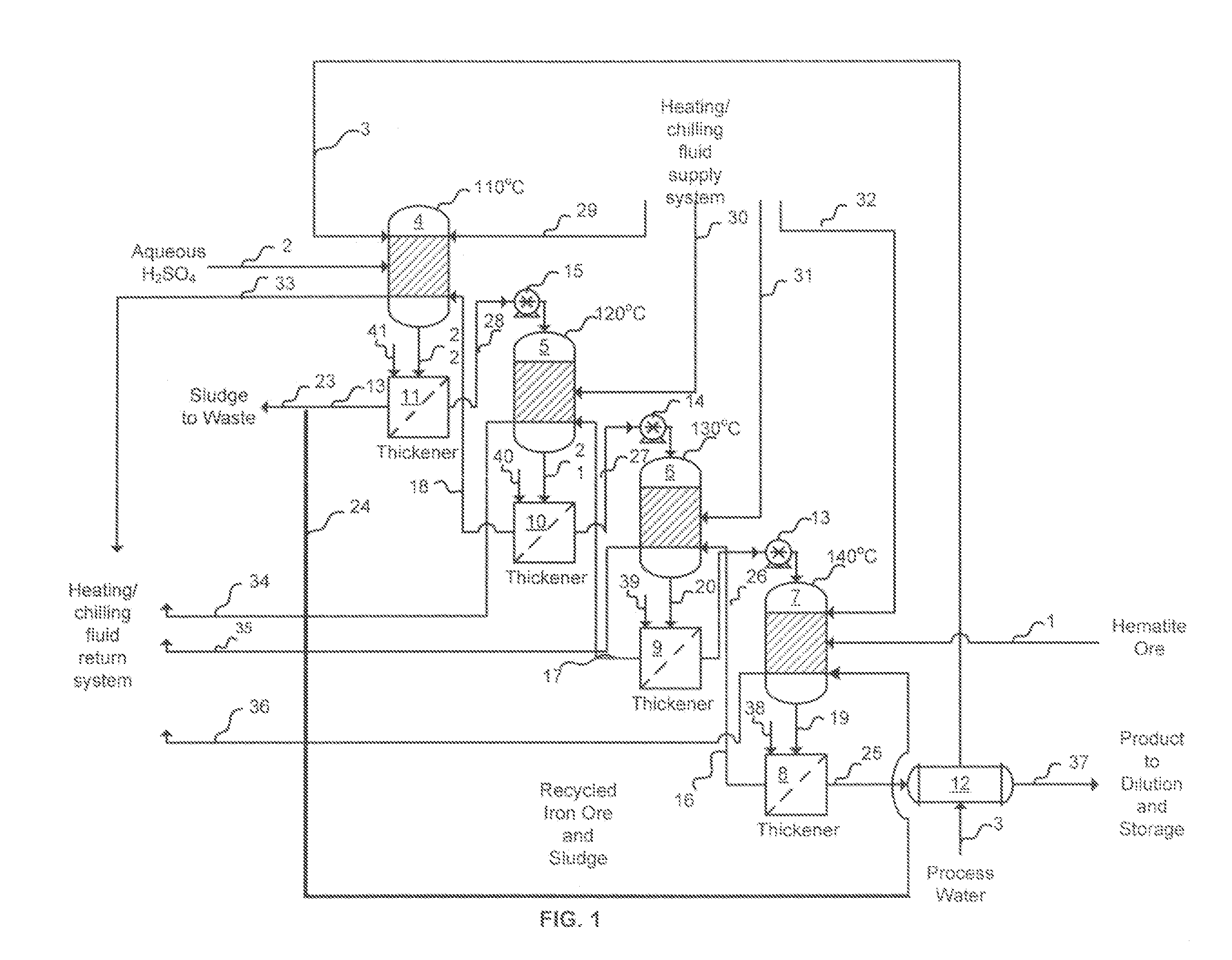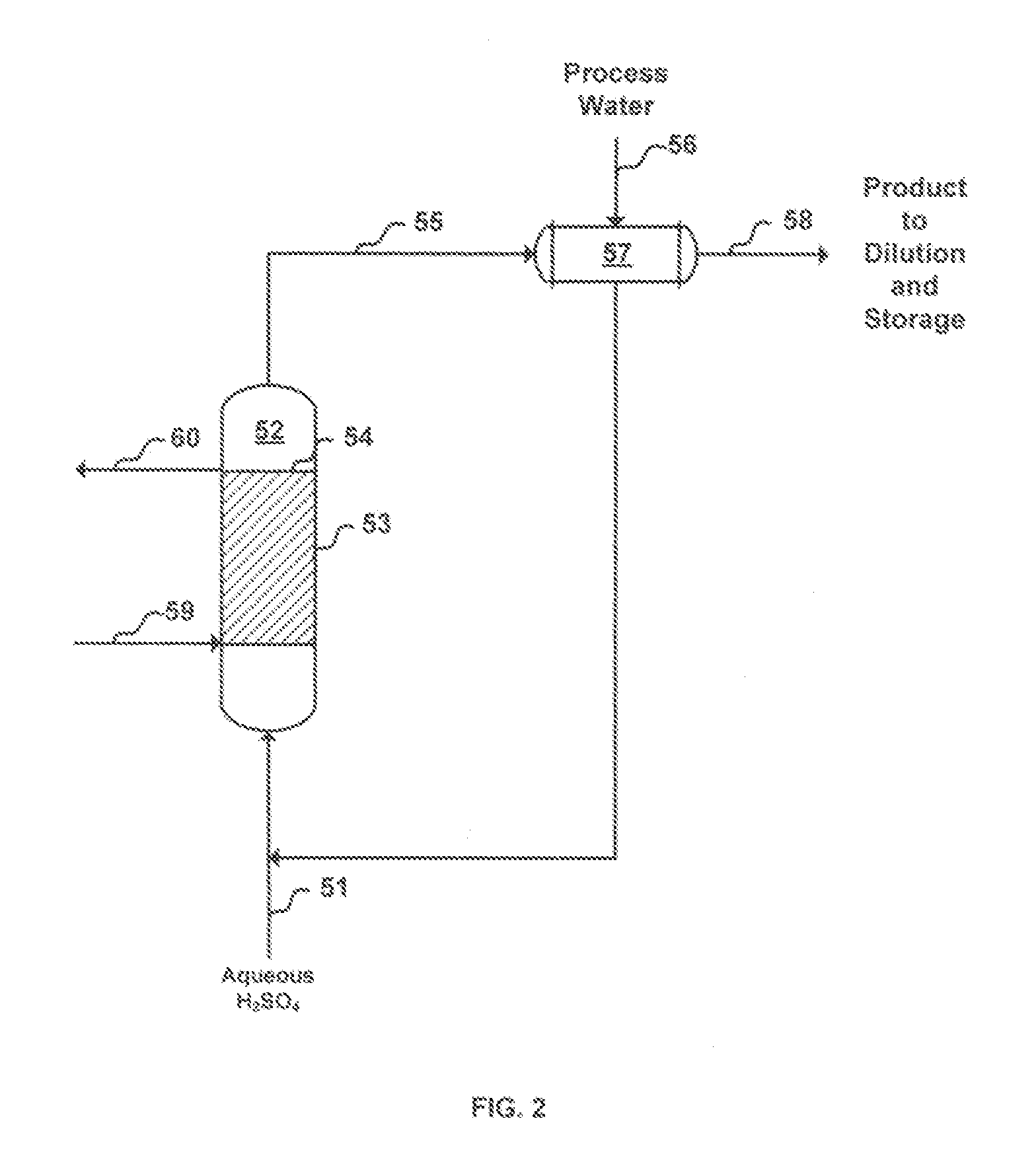Method for ferric sulfate manufacturing
a technology of ferric sulfate and manufacturing method, which is applied in the direction of iron sulfates, iron compounds, nickel compounds, etc., can solve the problems of high energy consumption and operating cost of calcining feooh at these high temperatures, inconvenient use of solid mass for customers, and high capital cost of calcining equipment, so as to achieve steady-state operation, steady-state operation, and product throughput
- Summary
- Abstract
- Description
- Claims
- Application Information
AI Technical Summary
Benefits of technology
Problems solved by technology
Method used
Image
Examples
Embodiment Construction
[0016]In the improved process for the production of liquid ferric sulfate using finely-divided iron ore, sulfuric acid and water, in accordance with the invention, the ferric sulfate produced contains minimal, if any, insoluble material and the product is advantageous for the consumer market because the product contains few inerts that may reduce cost effectiveness and add to product handling and housekeeping difficulties. In the invention, purification of the product may be and preferably is enhanced by the introduction of a suitable settling agent, preferably polymeric settling agent which aids in the removal of undissolved iron fines, if any, from the reactor output. Several techniques may be used to purify the product stream. These include, for example, conventional settling, filtration with or without an aid such as diatomaceous earth, and use of centrifugal force (e.g., a cyclone cleaner or a rotating screen). Additionally, in accordance with the invention, the yield is enhanc...
PUM
| Property | Measurement | Unit |
|---|---|---|
| weight percent | aaaaa | aaaaa |
| weight percent | aaaaa | aaaaa |
| weight percent | aaaaa | aaaaa |
Abstract
Description
Claims
Application Information
 Login to View More
Login to View More - R&D
- Intellectual Property
- Life Sciences
- Materials
- Tech Scout
- Unparalleled Data Quality
- Higher Quality Content
- 60% Fewer Hallucinations
Browse by: Latest US Patents, China's latest patents, Technical Efficacy Thesaurus, Application Domain, Technology Topic, Popular Technical Reports.
© 2025 PatSnap. All rights reserved.Legal|Privacy policy|Modern Slavery Act Transparency Statement|Sitemap|About US| Contact US: help@patsnap.com



